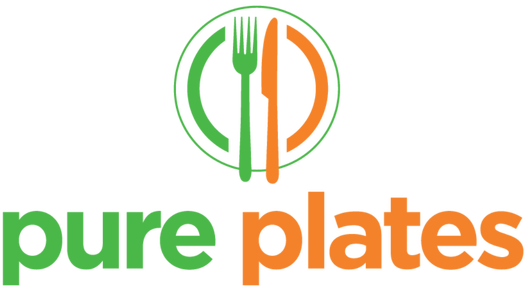What’s the Deal with Gluten?
Gluten is a group of proteins found in the endosperm of wheat, rye, barley, and triticale. (Sounds all super scientific right?) And it's important to recognize that wheat includes a variety of grains, such as
So if it's a naturally occurring protein, what's all the fuss about?
This is a question we get asked all the time. Thus, let us explain...
Potential Effects of Gluten
Gluten has been shown to irritate the lining of the gut and contribute to intestinal permeability. Specifically, studies have demonstrated that a protein in gluten (gliadin) increases the production of a substance known as zonulin. And zonulin is a protein that has been shown to increase intestinal permeability in humans.
Intestinal permeability is also widely recognized as "leaky gut," and it refers to the integrity of the small intestinal lining. Essentially, if the lining is irritated or inflamed, gaps between intestinal cells form and allow partially digested nutrients and harmful pathogens to “leak” directly into the bloodstream.
The immune system then reacts in response to these foreign invaders, which ultimately leads to allergies, autoimmunity, and systemic inflammation if left untreated. And inflammation is now believed to be at the root of many modern diseases.
Gut-Brain Axis
But the potential effects of gluten don't end there. The gut has its own nervous system and produces more neurotransmitters (i.e., serotonin) than your brain. This means the intestinal nervous system is in constant contact with the central nervous system.
Thus, if the gut is compromised, the brain may be negatively affected and vice versa. This explains why many brain-related symptoms and conditions (i.e., depression, anxiety, autism, and ADHD) are associated with digestive dysfunction.
Is Gluten Really to Blame?
Some argue the problems people experience might not actually be caused by gluten alone, but rather wheat in general (or both). This is based on the fact that conventional wheat is heavily sprayed with glyphosate (a.k.a. Round-Up) before harvesting.
Thus, it's this chemical that some experts blame for the rise of wheat related allergies and sensitivities. Especially because many people these days are eating wheat at almost every meal. Cereal or toast with breakfast, pretzels and crackers for snacks, sandwiches for lunch, and pasta for dinner. Not to mention wheat flour is used in many soups, sauces, and condiments.
Should Everyone Be Gluten Free?
We think there are several individual factors that should be explored before making this decision.
If you're experiencing digestive related issues, eliminating gluten may be very helpful. But also consider all the other symptoms you're experiencing. Fatigue, PMS, brain fog, migraines, anxiety, etc.
Gluten may not be the root cause of all these symptoms, but it does have the potential to cause inflammation. And the gut is closely linked to all other systems in the body, including the brain. Thus, gluten may be a contributing factor.
And whether you go gluten-free or not, reducing your intake is almost always beneficial. Especially because the form of wheat that most people consume comes from processed and refined foods (i.e., bread, cereal, pasta, crackers, and cookies).
What Foods Can You Eat on a Gluten Free Diet?
Eating a gluten-free diet may be easier than you think. The following foods are all naturally gluten free:
- Fruits and veggies
- Meat and fish
- Beans and lentils
- Nuts and seeds
- Eggs and dairy
- Healthy fats (i.e., coconut oil and olive oil)
- Non-gluten grains (i.e., millet, quinoa, rice, amaranth, and corn)
Essentially, all whole, unprocessed foods except wheat, rye, and barley are naturally gluten free. Thus, the possibilities are endless!
What About Gluten Free Processed Foods?
A gluten-free muffin or cookie is a better choice in terms of preventing exposure to gluten. But that's where the benefits stop.
Most gluten-free processed foods simply replace wheat with other non-nutritive flours, starches, and gums. And some may be worse than their wheat counterparts. In addition, they still often contain artificial and chemical food additives.
To Sum it Up...
Gluten and/or wheat have the potential to cause digestive dysfunction, which can translate to many other problems throughout the body and brain. Thus, many people are finding relief by eliminating gluten from their diet.
Due to all the potential health concerns, allergies, and sensitivities associated with gluten and wheat as well as our own personal health, all of our Pure Plates meals are 100% gluten and wheat free. And we only use whole foods that are naturally gluten free. Thus, whether you're following a gluten free diet or not, we've got you covered!
References
Bresnahan, G. A., Manthey, F. A., Howatt, K. A., & Chakraborty, M. (2003). Glyphosate Applied
Fasano, A. (2012). Intestinal Permeability and Its Regulation by Zonulin: Diagnostic and Therapeutic Implications. Clinical Gastroenterology and Hepatology,10(10), 1096-1100. doi:10.1016/j.cgh.2012.08.012
Fasano, A. (2011). Gut and Autoimmune Diseases. Clinical Reviews in Allergy & Immunology,42(1), 71-78. doi:10.1007/s12016-011-8291-x
Fasano, A., & Shea-Donohue, T. (2005). Mechanisms of Disease: the role of intestinal barrier function in the pathogenesis of gastrointestinal autoimmune diseases. Nature Clinical Practice Gastroenterology & Hepatology,2(9), 416-422. doi:10.1038/ncpgasthep0259
Hunter, P. (2012). The inflammation theory of disease: The growing realization that chronic inflammation is crucial in many diseases opens new avenues for treatment. EMBO Reports, 13(11), 968–970. doi:10.1038/embor.2012.142
Khansari, N., Shakiba, Y., & Mahmoudi, M. (2009). Chronic Inflammation and Oxidative Stress as a Major Cause of Age- Related Diseases and Cancer. Recent Patents on Inflammation & Allergy Drug Discovery,3(1), 73-80. doi:10.2174/187221309787158371

